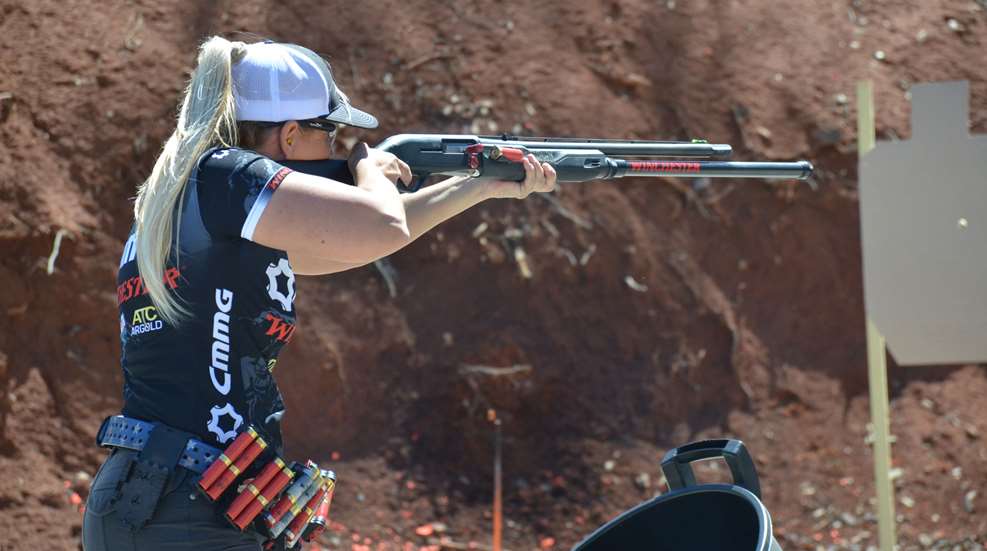
If you are a first-time firearm owner, or contemplating buying a firearm, you might be considering a shotgun. Shotguns are used in competition, from trap, skeet, sporting clays, Helice, International Trap, to 3-gun or practical shotgun. Shotguns can also be a great home-defense choice. Understanding how they work and their basic format will be useful as you select and use your shotgun.

Shotguns come in many shapes, sizes, and methods of operation: pump, gas-operated, inertia-operated, box-fed, side-by-side and over-under, even some oddballs, like lever-action. Here is a look at the most common types of shotguns and the activity for which each is best suited.

Pump or Manually Operated
The simplest, most budget-friendly shotguns are pump-actions, which are manually operated.
Barrels can be short, for home-defense, or long, for hunting or personal defense, and even competition. If you like to work the action, this is the gun for you. One drawback about pumps for new gun owners is something called short-stroking, which is the failure to cycle the action completely. This can be overcome with a little practice.
Pump guns are usually a first choice in home-defense, as the cycling is operator-dependent. This means ammo generally can’t cause cycling issues. For example, I can’t shoot an 1145 fps (feet per second) round out of some inertia guns, but I could shoot even 800 fps out of a pump since the cycling depends on me doing my part—not the ammo being powerful enough. This means, for small-framed people who don’t want a lot of recoil, a more gentle recoil can be achieved by using a pump gun while still having a gun that cycles reliably.
Gas Operated
Shotguns that use the captured gas from firing a round to cycle the gun fall into two main types: tube-fed and box-fed.
Tube-fed: Typically used for waterfowl hunting and competition, as well as personal defense. Gas-operated shotguns are a mainstay and come in all sizes and color patterns. They are great for hunting and competition because the semi-automatic facet of being gas-operated means the person using it can focus on hitting her target, not operating a gun. For hunters in blinds with little room to move, a gas-operated gun makes more sense than a manually operated gun.

Box-fed: This is a pretty small niche. Usually used in competition, or home defense. Somewhat more “needy” shotguns, as the shells best suited to run reliably are usually Winchester AAs. The consistent and dependably uniform hulls and crimp on the hulls make them the best ammo for box/fed guns.
Inertia Operated
Inertia-operated shotguns rely on the gun’s recoil to operate. An inertia spring inside the bolt, coupled with the recoil from the act of firing, overcomes the inertia spring in the bolt, forcing the bolt backward, then cycles it to pick up the next round.

Tube-fed: Usually for waterfowl hunting and competition. Inertia guns are usually not the first choice for home defense, as any weight changes or even particular ammo can affect reliable cycling of the gun.
Over-Under and Side-by-Side
Usually the choice for sporting clays, trap, skeet, and other serious shotgun sports, these break-actions are also pleasant for upland bird hunting or just recreating! A small .20 gauge or .410 can be extremely enjoyable. The pastime of shooting sporting clays or hand-throwing clay birds is akin to the firearm version of badminton—and suitable for summer afternoons of good family fun. These are also the guns of elite shotgun sports competitors, with names like Perazzi and Krieghoff, which carry an equally elite price tag!
Shorty, Bullpup, etc.
These are shotguns that are designed for use as a personal defense firearm. Some have some very odd-looking, short buttstocks. They are easier for a homeowner to maneuver in a hallway or tight space. These are shotguns with short buttstocks and designed for use as a personal defense firearm. This shotgun style is often chosen for its size and ease of use, as well as the fact that it is easily stored in a small safe, eliminating the need for a tall safe.

There are many examples of short shotguns that don’t require any special paperwork. Some shotguns that don’t fall into the category of “shorter” do have other features like a pistol grip, which can be found on Winchester’s SXP Defender.
No matter the type of shotgun that you decide on, understanding how it works and how to make it run are essential. Get to the range with yours and practice so you are able to use it for its intended purpose!











































